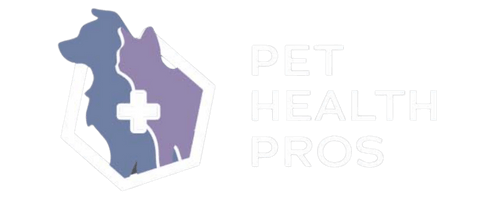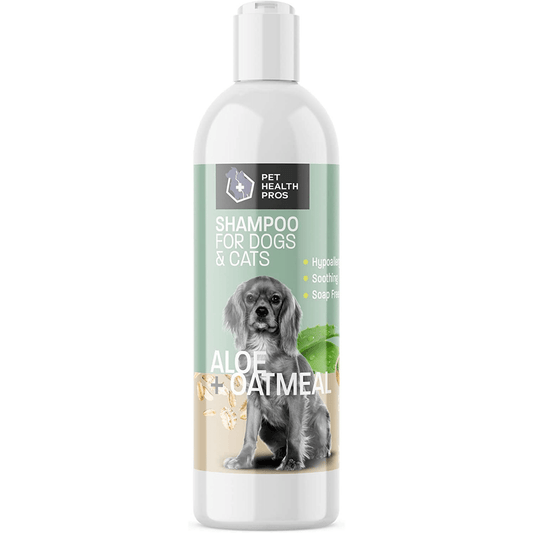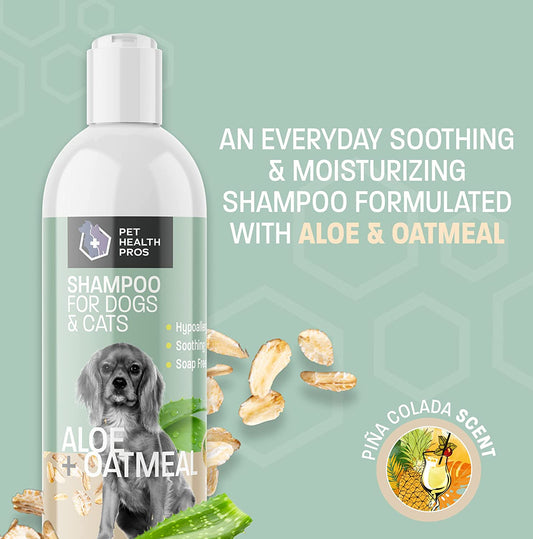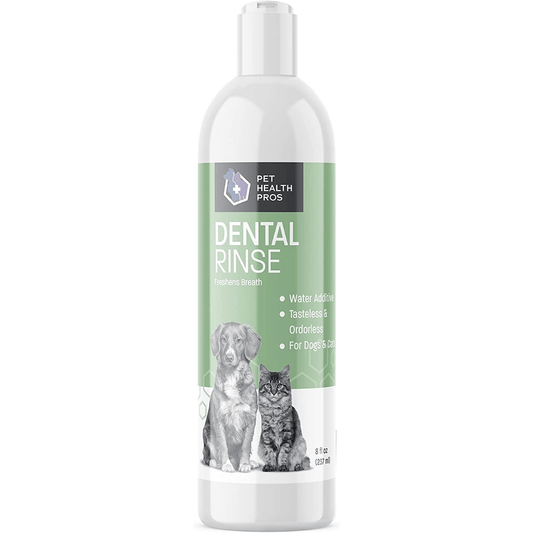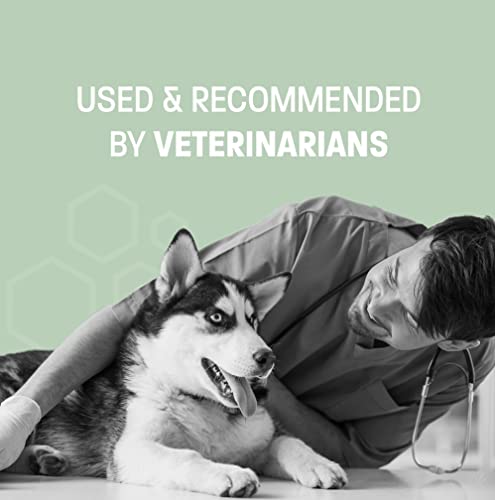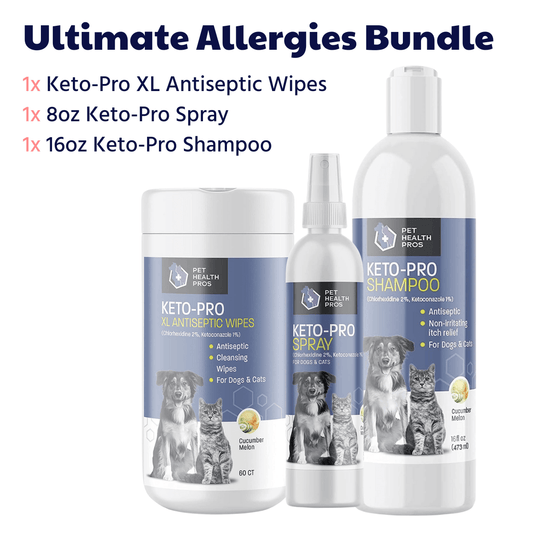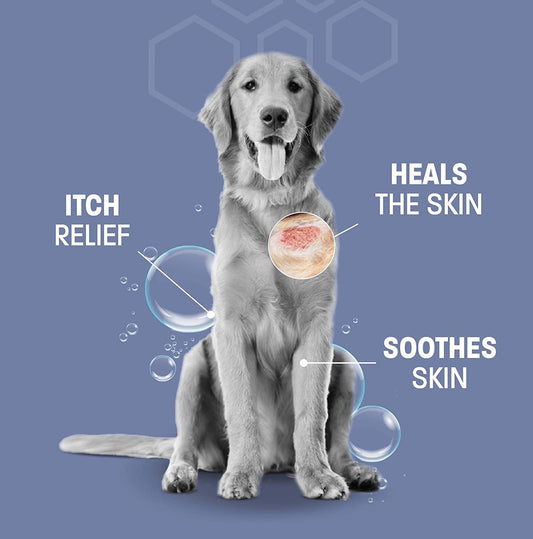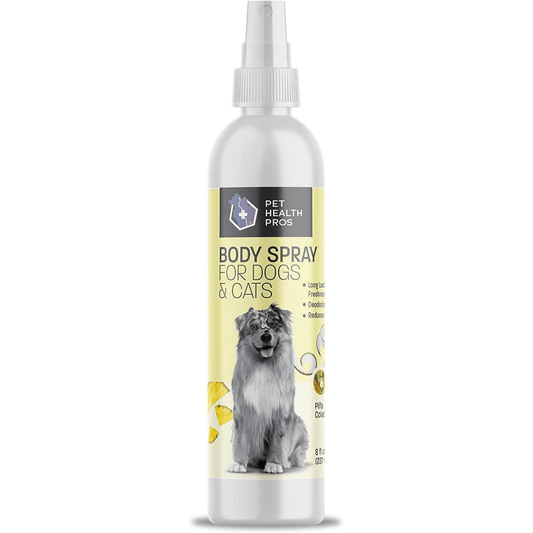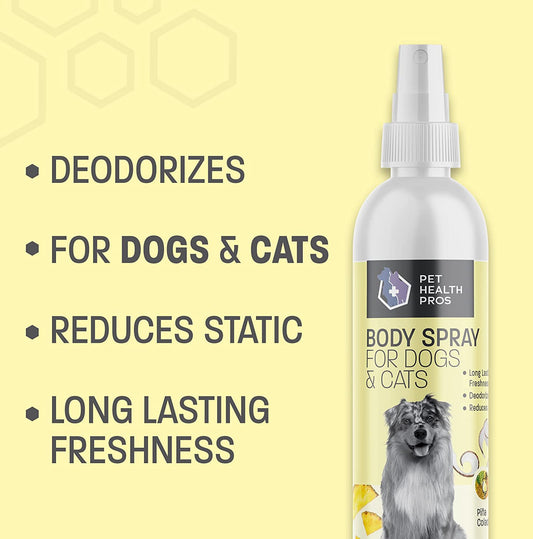Maintaining your dog's anal gland health is crucial for their comfort and well-being. This guide, presented by Pet Health Pros, will walk you through the steps to safely express your dog's anal glands at home. With over fifty years of veterinary experience and a commitment to pet health, Pet Health Pros offers expert advice and superior supplies to ensure your furry friend stays healthy and happy.
Key Takeaways
- Regular anal gland care is essential for your dog's health, preventing discomfort and potential infections.
- Proper preparation, including gathering supplies and creating a calm environment, is key to a successful anal gland expression.
- Following a step-by-step guide ensures safe and effective anal gland expression, reducing the risk of injury to your dog.
- Monitoring your dog post-expression is important for spotting any signs of complications early on.
- Maintaining ongoing anal gland health can be supported by a balanced diet, regular exercise, and Pet Health Pros products crafted with expertise.
Understanding the Importance of Anal Gland Health
The Role of Anal Glands in Dogs
Anal glands, or anal sacs, are small glands located on either side of a dog's anus. They are responsible for producing a unique scent that dogs use for identification and marking territory. Proper functioning of these glands is essential for your dog's well-being.
When a dog defecates, the pressure causes the glands to express naturally, releasing the fluid. However, if the glands do not empty properly, discomfort and health issues can arise. It's important to recognize the signs of anal gland problems early to prevent complications.
Regular maintenance of anal gland health is crucial for preventing discomfort and potential infections.
Understanding the anatomy and the normal process of anal gland expression is the first step in ensuring your pet's comfort and health. Here's a quick overview of the key points:
- Anal glands produce a scent-marking fluid
- Located at the 4 and 8 o'clock positions around the anus
- Natural expression occurs during defecation
- Manual expression may be necessary if natural processes fail
Signs of Anal Gland Issues
Recognizing the signs of anal gland issues in dogs is crucial for their comfort and health. Dogs may scoot their rear on the ground, a behavior often mistaken for a quirky habit, but it can be a plea for relief from discomfort. Other signs include excessive licking or biting at the anal area, a foul-smelling odor, and difficulty defecating.
Inflammation or swelling near the anus is another red flag that should not be ignored. If you notice any of these symptoms, it's important to address them promptly to avoid further complications. Here's a list of common signs:
- Scooting on the ground
- Excessive licking or biting at the anal area
- Foul-smelling odor
- Difficulty defecating
- Swelling or inflammation near the anus
It's essential to monitor your dog for changes in bathroom habits, appearance, and weight. These changes could indicate underlying health issues. Regular vet check-ups are important for your dog's well-being.
Consequences of Neglected Anal Gland Care
Neglecting the care of your dog's anal glands can lead to a host of uncomfortable and potentially serious health issues. Impacted anal glands are a common consequence, which can cause discomfort and lead to infections or abscesses if left untreated.
Infection of the anal glands can be particularly troublesome, as it may require more intensive treatment such as antibiotics or even surgery. Additionally, chronic issues with the anal glands can contribute to skin irritation and a decreased quality of life for your pet.
- Impaction
- Infection
- Abscess formation
- Chronic discomfort
- Skin irritation
Chronic neglect of anal gland health can also lead to systemic health problems, which may affect your dog's overall well-being and can incur significant veterinary costs.
Preparing for the Procedure
Gathering Necessary Supplies
Before you begin the process of expressing your dog's anal glands, it is crucial to have all the necessary supplies on hand. Ensure you have a pair of disposable gloves to maintain hygiene and protect your hands during the procedure. You will also need some paper towels or a clean cloth to catch any secretions, and a warm, damp washcloth to clean the area afterwards.
Latex or nitrile gloves are recommended for their durability and ability to provide a good tactile feel. It's also wise to have a plastic bag for disposing of used materials and a pet-safe disinfectant to clean the area once you're done.
Remember, having everything prepared in advance will make the process smoother and less stressful for both you and your pet.
Lastly, consider having some treats on hand to reward your dog for their patience and cooperation during this uncomfortable but necessary task.
Creating a Calm Environment
Before beginning the anal gland expression process, it is crucial to ensure that your dog is in a calm and relaxed state. A serene setting can significantly reduce stress for both you and your pet, making the procedure smoother and safer. Start by choosing a quiet room, away from loud noises and distractions. Soft background music or white noise can help soothe your dog's nerves.
To further create a tranquil atmosphere, consider the following tips:
- Use a gentle voice and calm demeanor throughout the process.
- Have your dog's favorite blanket or bed nearby to provide comfort.
- Allow your dog to become accustomed to the space by spending some time there before starting.
Remember, a relaxed dog is more likely to cooperate, which is essential for a successful and safe expression of the anal glands.
By taking these steps, you are not only preparing your dog for the procedure but also fostering a bond of trust that can make future care easier.
Safety Measures Before You Begin
Before expressing your dog's anal glands, it's crucial to prioritize safety for both you and your pet. Ensure your dog is calm and comfortable; a stressed dog can make the process more difficult and risky. Wear gloves to maintain hygiene and prevent the spread of bacteria.
Preparation is key to a smooth and safe procedure. Have all your supplies within reach to avoid any interruptions. Here's a list of items you should have on hand:
- Gloves
- Paper towels or clean cloths
- A warm, damp washcloth
- A plastic bag for waste disposal
- A pet-safe disinfectant
Remember, if at any point you feel unsure or uncomfortable with the process, it's best to seek professional help. Expressing anal glands can be delicate, and improper technique can cause harm to your dog.
The Step-by-Step Expression Process
Identifying the Anal Glands
Before attempting to express your dog's anal glands, it is crucial to know where they are located. The anal glands, or anal sacs, are two small glands situated on either side of your dog's anus, typically at the four o'clock and eight o'clock positions. Feeling for these glands requires a gentle touch to avoid causing discomfort or injury to your pet.
To properly identify the glands, follow these steps:
- Place your dog in a comfortable and stable position.
- Lift the tail gently to expose the anus.
- Using your thumb and forefinger, feel for small, pea-sized glands at the aforementioned positions.
Remember, if you're unsure about locating the anal glands or the procedure itself, it's best to seek guidance from a professional groomer or veterinarian.
Once you have located the anal glands, you're ready to proceed with the expression technique. Take your time and ensure you're familiar with the process to minimize stress for both you and your dog.
Proper Techniques for Safe Expression
Expressing your dog's anal glands requires precision and care to ensure the process is comfortable and safe for your pet. Always wear gloves to maintain hygiene and protect your hands. Position your dog in a way that allows easy access to the anal area—small dogs can be placed on a table, while you may need to kneel behind a larger dog.
Gently feel for the anal glands, which are located at the four and eight o'clock positions around the dog's anus. Apply gentle pressure upwards and inwards towards the anus. If you're unsure about the location or the amount of pressure needed, consult a professional before attempting.
It's crucial to be calm and reassuring throughout the process, as your dog may feel anxious or uncomfortable.
After successfully expressing the glands, clean the area with a damp cloth to remove any residue. Dispose of the gloves and wash your hands thoroughly. Here's a simple checklist to follow:
- Wear protective gloves
- Position your dog comfortably
- Locate the anal glands
- Apply gentle pressure
- Clean the area post-expression
- Dispose of gloves and wash hands
Remember, if at any point you feel uncertain or if your dog shows signs of distress, it's best to seek the assistance of a veterinary professional.
Post-Expression Cleaning and Care
After safely expressing your dog's anal glands, it's crucial to ensure that the area is clean to prevent any infections. Gently wipe the area with a damp cloth or a pet-safe wipe to remove any residual fluid. Dispose of the cloth or wipe immediately to maintain hygiene.
Hygiene is paramount post-expression, so wash your hands thoroughly with soap and water. If you notice any unusual discharge or persistent odor after cleaning, it may be a sign of infection, and you should consult your veterinarian.
Regularly inspect the anal area for signs of redness or swelling in the days following the expression. This vigilance helps in early detection of any potential issues.
To maintain a clean and healthy anal gland area, consider incorporating these steps into your routine:
- Monitor your dog's stool consistency, as firm stools can help naturally express the glands.
- Ensure your dog has access to fresh water at all times.
- Schedule regular vet visits for professional gland expressions when necessary.
Aftercare and Monitoring
What to Expect Post-Expression
After expressing your dog's anal glands, it's normal to see some temporary changes. Your dog may scoot or lick the area more frequently, which should subside within a day. Mild redness or swelling can occur but should not persist. Here's what to monitor:
- Frequency of scooting or licking: A slight increase is normal immediately after expression.
- Appearance of the anal area: Watch for excessive redness, swelling, or discharge.
- Dog's comfort level: Your pet should not appear to be in significant pain or distress.
It's essential to ensure your dog remains comfortable and that any signs of discomfort are fleeting. Persistent issues warrant a call to your veterinarian.
If you notice any concerning symptoms, such as bleeding or an unusual odor, seek veterinary assistance promptly. Remember, proper aftercare is crucial for your dog's recovery and comfort. For ongoing support, consider the Pet Health Pros products, which are tailored to your dog's needs and can aid in preventing future gland issues.
Monitoring Your Dog for Complications
After expressing your dog's anal glands, it's crucial to monitor them for any signs of complications. Watch for unusual behaviors such as excessive licking of the area, scooting, or signs of pain. These could indicate irritation or infection.
Symptoms to be aware of include swelling, redness, or discharge, which should prompt an immediate call to your veterinarian. Here's a simple checklist to help you monitor your dog:
- Observe your dog's general demeanor and activity level.
- Check the expressed area daily for any signs of redness or swelling.
- Note any changes in bowel movements or stool consistency.
- Be alert for any foul odors emanating from the anal region.
It is essential to act quickly if you notice any of these symptoms, as early intervention can prevent more serious health issues.
Remember, regular health checks for pets are crucial for early detection of issues. Monitor weight, dental hygiene, mental well-being, and grooming for a healthy pet. Essential physical exams are vital.
When to Seek Veterinary Assistance
While expressing your dog's anal glands can often be done at home, there are times when it is crucial to seek professional veterinary assistance. If your dog shows signs of discomfort, pain, or infection post-expression, such as excessive licking, swelling, or bleeding, it is imperative to consult a veterinarian. Additionally, if you are unable to express the glands after several attempts, this could indicate an underlying issue that requires medical attention.
It all depends on the individual and some dogs do need their anal glands expressing every 4-6 weeks. We would advise ensuring they are on a high fibre diet.
A veterinarian can provide a thorough examination and, if necessary, perform the expression in a safe and sterile environment. They can also offer advice on preventive care and dietary adjustments to help maintain anal gland health. Remember, timely intervention can prevent more serious complications and ensure the well-being of your beloved pet.
Maintaining Anal Gland Health
Diet and Exercise Tips
Maintaining your dog's anal gland health is significantly influenced by their diet and exercise routine. A well-balanced diet is crucial for ensuring that the anal glands function properly. High-fiber foods can help create bulkier stools, which in turn can aid in the natural expression of the glands during defecation.
Regular exercise is equally important. It helps keep your dog at a healthy weight, which reduces the pressure on the glands and minimizes the risk of blockages. Here are some tips to consider:
- Incorporate high-fiber foods into your dog's diet, such as pumpkin or beet pulp.
- Ensure access to fresh water at all times to promote digestion and stool consistency.
- Establish a consistent exercise routine that includes walks, runs, or playtime.
Remember, each dog is unique, and dietary needs can vary. It's essential to tailor your dog's diet and exercise plan to their specific requirements, which may involve consulting with a veterinarian.
Regular Check-Ups and Professional Care
Regular veterinary check-ups are a cornerstone of maintaining your dog's anal gland health. Scheduling routine visits to your vet can help catch early signs of anal gland issues before they escalate into more serious conditions. During these visits, a professional can assess the glands for any abnormalities and perform expressions if necessary.
It's recommended to have your dog's anal glands checked at least twice a year. However, dogs with a history of anal gland problems may require more frequent examinations. Here's a simple guideline to follow:
- Every 6 months for healthy dogs
- Every 3-4 months for dogs with occasional issues
- Every 1-2 months for dogs with chronic problems
Remember, early detection and treatment are key to preventing infections and other complications. Trust in the expertise of your veterinarian to guide you on the best care routine for your dog.
Pet Health Pros emphasizes the importance of professional care with their range of products developed in collaboration with veterinarians. Their commitment to quality and customer satisfaction ensures that your pet receives the best support for their anal gland health.
Pet Health Pros Products for Ongoing Support
Maintaining your dog's anal gland health is an ongoing process, and Pet Health Pros is your partner in this journey. With a range of products specifically designed for your pet's well-being, you can ensure that your furry friend receives the best care possible. Pet Health Pros offers expert solutions for dog health, including supplements, ear drops, wipes, shampoos, and antibacterial products. Affordable and quality care for your furry friend.
The right products can make a significant difference in preventing future anal gland issues and enhancing your dog's overall health.
Here's a quick overview of what Pet Health Pros provides:
- Supplements: To support digestive health and firm stools, which can naturally help express the anal glands.
- Ear Drops: To prevent infections that can sometimes be related to anal gland issues.
- Wipes and Shampoos: Specially formulated to maintain hygiene and soothe sensitive areas.
- Antibacterial Products: To protect against infections and promote healing post-expression.
Backed by over fifty years of combined experience in Veterinary Medicine and Animal Health Management, Pet Health Pros is a brand you can trust. Their commitment to quality and customer satisfaction is evident in their collaboration with veterinarians and use of top-grade ingredients.
Ensuring the health of your pet's anal glands is crucial for their comfort and well-being. Regular check-ups and proper care can prevent common issues such as impaction or infections. For comprehensive guidance and tips on maintaining anal gland health, visit our website. We provide detailed information and support to keep your furry friend happy and healthy. Don't let discomfort affect your pet's quality of life—take action today!
Conclusion
Expressing your dog's anal glands is an important aspect of their health and well-being. By following the step-by-step guide provided, you can safely and effectively perform this task at home. Remember to be gentle and patient throughout the process, as it can be uncomfortable for your pet. If you're unsure or uncomfortable with any step, don't hesitate to seek professional help from a veterinarian. Regular maintenance of your dog's anal glands can prevent discomfort and potential health issues, ensuring a happier and healthier life for your furry companion. For all your pet health needs, trust Pet Health Pros to provide expertly crafted supplies that are backed by a 100% satisfaction guarantee and over fifty years of veterinary experience. Remember, healthier pets lead to happier lives, and at Pet Health Pros, where pets come first, we're dedicated to the well-being of your pet companions.
Frequently Asked Questions
How often should I express my dog's anal glands?
The frequency of anal gland expression can vary depending on the dog. Some dogs may need it monthly, while others rarely require it. Monitor your dog for signs of discomfort or scooting, and consult with your vet for a personalized schedule.
Can I express my dog's anal glands at home?
Yes, you can express your dog's anal glands at home by following proper techniques to ensure safety. However, if you're uncomfortable or unsure, it's best to seek professional assistance from a vet or a groomer.
What are the signs that my dog's anal glands need expressing?
Signs that your dog may need its anal glands expressed include scooting on the floor, licking or biting at the anus, a fishy odor, and visible discomfort or swelling near the anal area.
What supplies do I need to express my dog's anal glands?
You'll need a pair of disposable gloves, paper towels or wipes, a warm washcloth, and a quiet, clean space. Some people may also use a lubricant to ease the process.
Is there any aftercare required following anal gland expression?
After expressing your dog's anal glands, clean the area with a warm washcloth, monitor your dog for any signs of irritation or infection, and ensure they're comfortable. Consult your vet if you notice any unusual symptoms.
What can I do to maintain my dog's anal gland health?
Maintaining a healthy diet, ensuring regular exercise, and checking the anal glands periodically can help. Pet Health Pros offers products that support overall pet health, which may contribute to healthy anal glands.
